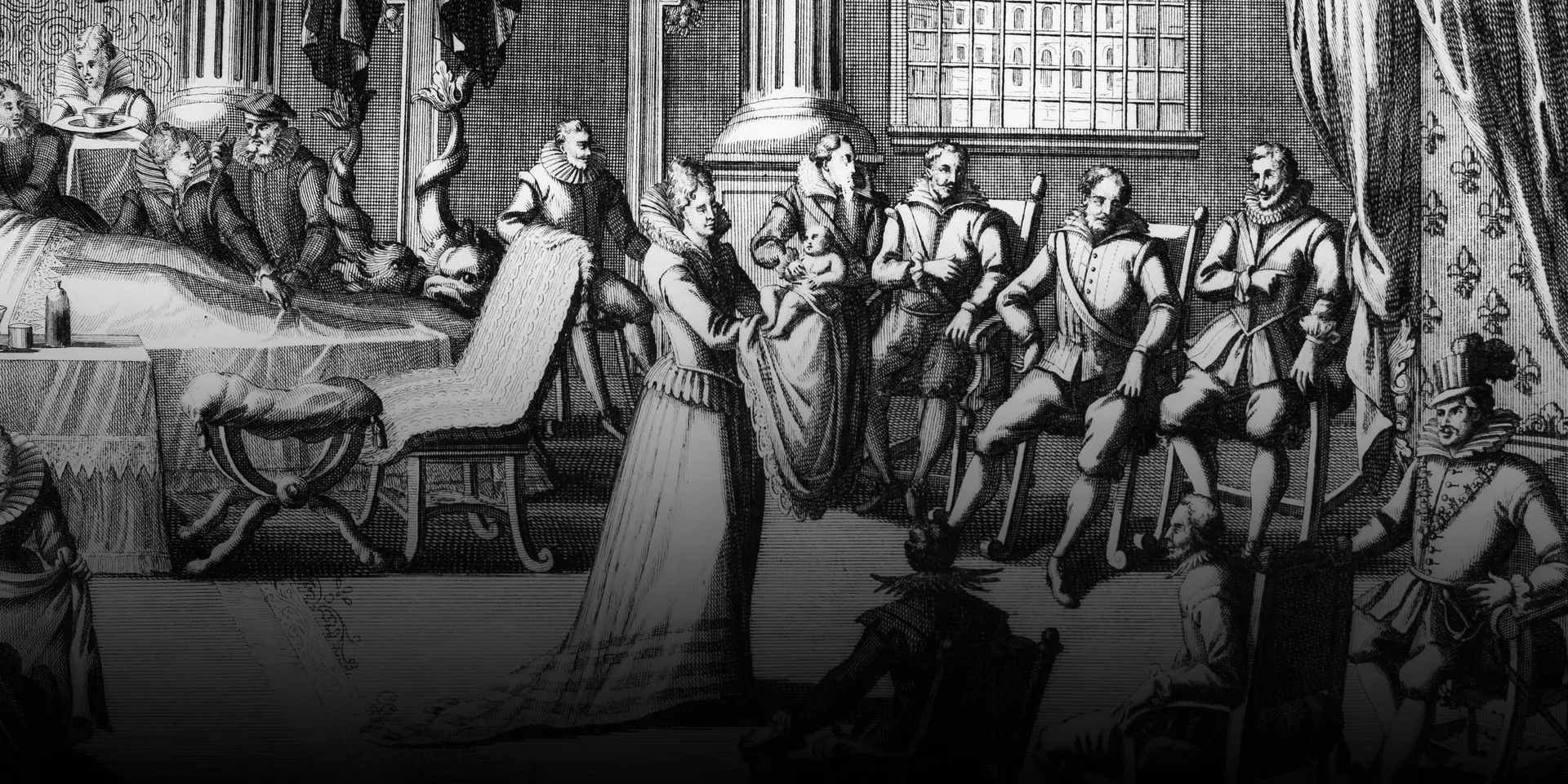The practice of public childbirth, also known as lying-in-state, was a decree imposed by King Louis XIV of France, also known as the Sun King, in the late 17th century. This mandatory requirement affected not just the queens but also princesses, as a means of ensuring the authenticity of their newborn children’s parentage.
Following Louis XIV’s example, King Louis XV continued the practice, and by the time Marie Antoinette found herself expecting her first child as the queen consort of France in 1774, it had become a longstanding custom.
Marie Antoinette’s childbirth was no exception; she gave birth to her daughter Marie-Thérèse Charlotte in a large bed, aided by her doctors and ladies-in-waiting, in front of a gathering of high-ranking officials and prominent nobility. Her husband, King Louis XVI, was present, though it was customary for him to retire to another room upon the onset of labor.
The principal purpose of this policy was to prevent any illegitimate heirs from unseating the rightful king or queen. The practice also served as a form of political display, as it allowed the royal family to exhibit evidence of their fertility and connection with their divine right to the throne.
However, the public viewing of childbirth also had negative aspects, as it exposed women to an immense amount of scrutiny and voyeuristic intrusion. Those who could not afford childbirth in the comfort of their own homes were left with no option but to give birth in public, subjected to the curious gaze of spectators.
Despite its significance as a symbolic manifestation of royalty and legitimacy, the practice was eventually abandoned in the second half of the 19th century due to advancements in medical science, which enabled women to receive medical care in more private and hygienic environments. Today, this longstanding tradition serves primarily as an interesting historical footnote, though some may argue that it reflects certain social and political norms and beliefs that long prevailed in societies such as medieval Europe.
image sources
- royal-birth-feature-gettyimages-959146664: https://assets.editorial.aetnd.com/uploads/2019/04/royal-birth-feature-gettyimages-959146664.jpg?width=1920&height=960&crop=1920%3A960%2Csmart&quality=75&auto=webp



